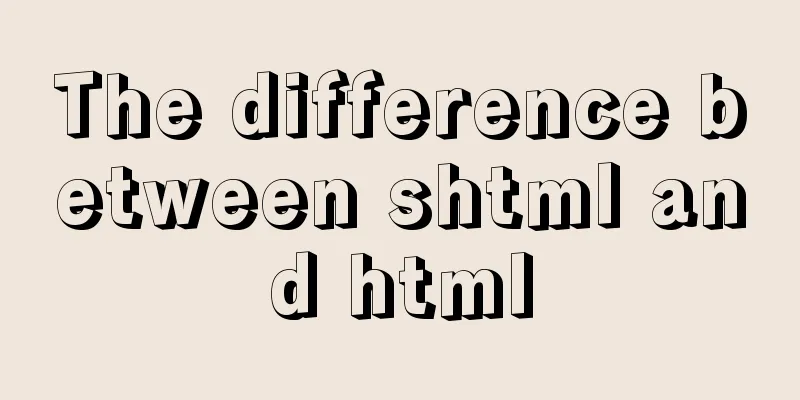JavaScript explains the encapsulation and use of slow-motion animation

Implementing process analysis(1) How to call repeatedly? Answer: Encapsulate a function and call it once Code Analysis:
function animate(obj, target, callback) { //Detailed implementation steps};animate: (animation function) obj (animation object): to whom the animation effect is added target (target value): how far to move to callback (callback function): what function to execute at the same time (2) How to achieve the easing effect? (Easy-motion animation core algorithm) Answer: Moving distance = (target value - current box position) / 10. The moving distance will gradually decrease until it stops, thus realizing the easing principle. Code Analysis: var step = (target - obj.offsetLeft) / 10; step (moving distance): the distance the element is to move target (target value): how far to move to obj.offsetLeft (the current position of the box): the current distance of the box from the left side (3) Why can’t it move to the specified position? (The target distance given is 500px, and it stops at 496.4) Answer: Because it needs to be rounded, positive numbers are rounded up and negative numbers are rounded down
Code Analysis: step = step > 0 ? Math.ceil(step) : Math.floor(step); If the distance setp is to move is a positive number, it is rounded up, if it is a negative number, it is rounded down, and a ternary expression is used to optimize the code and improve the overall quality. (4) How to make the target element actually move? A: Add a timer and assign the real-time moving distance (step length) to the element Code Analysis:
var timer = setInterval(function () { //Detailed implementation code}, 15); //Add timer obj.style.left = obj.offsetLeft + step + 'px'; //Step length1. Add a name to the timer to make it easier to clear the timer. Set the time to 15 (15 is often used in actual development) 2. The value on the left side of the element = the distance from the element to the left + the moving distance + 'px' (remember to add the px unit). The implementation principle is to continuously assign the latest value to the element to achieve the effect of animation. (5) Why does it become so annoying or faster and faster? Answer: Because the timer is added repeatedly, the timer needs to be cleared each time it is called Code Analysis: clearInterval(timer); There are two places that need to be cleared. The first is when the easing animation function is just called to avoid ghosts and speed breaks. The second is to determine whether the element has reached the specified position. If it has reached the specified position, stop the timer. Case test:
<!DOCTYPE html>
<html lang="en">
<head>
<meta charset="UTF-8">
<meta http-equiv="X-UA-Compatible" content="IE=edge">
<meta name="viewport" content="width=device-width, initial-scale=1.0">
<title>Document</title>
<style>
.sliderbar {
/* width: 240px; */
/* height: 40px; */
/* Parent box positioning is based on actual requirements*/
position: absolute;
right: 0;
top: 100px;
text-align: center;
line-height: 40px;
/* display: block; */
width: 40px;
height: 40px;
cursor: pointer;
}
.sp {
position: relative;
color: #fff;
}
.con {
/* Set absolute positioning so it floats in the parent box*/
position: absolute;
left: 0;
top: 0;
width: 200px;
height: 40px;
background-color: pink;
z-index: -1;
color: #fff;
}
</style>
<script src="./animate.js"></script>
</head>
<body>
<div class="sliderbar">
<span class="sp">←</span>
<div class="con">Problem feedback</div>
</div>
<script>
var sliderbar = document.querySelector('.sliderbar');
// var sp = document.querySelector('.sp');
var con = document.querySelector('.con');
sliderbar.addEventListener('mouseenter', function() {
//animate(obj, target, callback);
animate(con, -160, function() {
sliderbar.children[0].innerHTML = '→';
});
})
sliderbar.addEventListener('mouseleave', function() {
//animate(obj, target, callback);
animate(con, 0, function() {
sliderbar.children[0].innerHTML = '←';
});
})
</script>
</body>
</html>The overall idea is to call the animation function by adding mouse events to the box to achieve the final effect. Operation effect:
The final encapsulation code of the easing animation function (animate.js):
Life never stops, learning never stops, keyboards are worn out, and monthly salary exceeds ten thousand! Come on, coder This is the end of this article about the encapsulation and use of JavaScript slow-motion animation. For more relevant JavaScript slow-motion animation content, please search for previous articles on 123WORDPRESS.COM or continue to browse the related articles below. I hope everyone will support 123WORDPRESS.COM in the future! You may also be interested in:
|
<<: Analysis of the principle of Nginx using Lua module to implement WAF
>>: Set the default text of the search box. The default text disappears when the mouse is clicked.
Recommend
Nginx configuration file detailed explanation and optimization suggestions guide
Table of contents 1. Overview 2. nginx.conf 1) Co...
How to Install Xrdp Server (Remote Desktop) on Ubuntu 20.04
Xrdp is an open source implementation of Microsof...
How to generate Hive table creation statement comment script in MySQL metadata
Preface This article mainly introduces the releva...
Automatically clean up the cache of js and css files in HTML pages (automatically add version numbers)
In the process of web project development, we oft...
Problems and solutions of error 08001 when linking to MySQL in IDEA and no table display after successful connection
Error: Connection to blog0@localhost failed. [080...
Detailed explanation of the role of the default database after MySQL installation
When you learn MySQL, you will find that it comes...
How to distinguish MySQL's innodb_flush_log_at_trx_commit and sync_binlog
The two parameters innodb_flush_log_at_trx_commit...
How to set up virtual directories and configure virtual paths in Tomcat 7.0
Tomcat7.0 sets virtual directory (1) Currently, o...
Example code for converting http to https using nginx
I am writing a small program recently. Because th...
Explanation of monitoring parameters in performance and sys schema in MySQL 5.7 (recommended)
1. Performance schema: Introduction In MySQL 5.7,...
Analysis of the cause of docker error Exited (1) 4 minutes ago
Docker error 1. Check the cause docker logs nexus...
Nginx monitoring issues under Linux
nginx installation Ensure that the virtual machin...
React ref usage examples
Table of contents What is ref How to use ref Plac...
Detailed explanation of MySQL startup options and system variables examples
Table of contents Boot Options Command Line Long ...
JavaScript to achieve JD.com flash sale effect
This article shares the specific code of JavaScri...










![12 Laws of Web Design for Clean Code [Graphic]](/upload/images/67cac706c91a2.webp)

